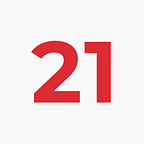In the following blogpost, we have summed up the main findings of our whitepaper “Secondary Markets for Security Token”. The whitepaper is part of a series called “STO 101: Anatomy & Context of Security Token Offerings”. Find more information of the series here.
Even if the potential of tokenization and Security Tokens, in particular, has not been fully exploited to date, the numerous advantages speak in favor of Security Tokens establishing themselves as an alternative to traditional securities.
With regard to the traditional securities market, large market potential is opening up. Forecasts indicate that 10% of global GDP will be covered by tokenization in the future. So there is much to suggest that we will hear more about the topic of Security Tokens in the future. In order to create a real incentive for investors, issuers, and other market participants such as service providers, tradability is a key factor. The possibility to trade Security Tokens in a liquid way is of particular importance for their acceptance.
Some key underlying conditions still stand in the way of this secondary market today, as evidenced by the experts quoted in this whitepaper. We have summarized the key findings.
Regulation is the key
In many countries, there is no uniform regulation regarding the Security Token construct at this point in time. This would create confidence among investors and encourage the development of secondary markets for Security Tokens. A major hurdle is created by the fact that Security Tokens are classified as classic security in most countries. This classification as security in turn brings with it further regulations that issuers wishing to conduct an STO must comply with. One example is anti-money-laundering and know-your-customer regulations.
On the one hand, this classification is legitimate from the standpoint that a Security Token is intended as a digital type of security. Such classification also makes sense in terms of investor protection. On the other hand, it creates partly insurmountable hurdles for issuers, especially in the case of small companies and startups, making the implementation of Security Tokens uneconomical, because compliance with the legal requirements is in turn associated with a high level of bureaucracy and thus high administrative costs. The legal basis also affects tokenization service providers.
But a look at the current legal movements shows that many jurisdictions have recognized this problem and have either already introduced corresponding laws, such as Switzerland and Liechtenstein, or are working on corresponding regulations. Even across the EU, the European Commission is currently drafting a proposal for the regulation of crypto assets (MiCA), which will apply to all EU member states in the future. There are also alternatives to active regulated secondary trading, for example in the form of bulletin platforms. These already make Security Tokens tradable today and map the cost advantages arising from tokenization in practice. However, these infrastructures only enable limited tradability, as participants must find a specific trading partner. The ideal scenario would be a fully automated exchange, which in turn requires regulation that must encourage this through exemptions. A compromise must therefore be found for the promotion of new technologies, such as Security Tokens in this case, and the protection of investors.
A particular milestone in this regard is the eWpG, which was passed by the German Bundestag last year. It regulates the issuance of bearer bonds and unit certificates in investment funds without a certificate and enables legally secure acquisition of the security through registration in a digital register. The maintenance of this register is subject to financial market supervision, which ensures investor protection.
Market participants
Both institutional investors, such as family offices, investment banks, and broker-dealers, as well as retail investors, will participate in secondary markets for Security Tokens in the future, as there are advantages for both investor categories.
Other market participants, in the view of the authors of this whitepaper, are issuers, and service providers in areas such as custody, verification, infrastructure and technology, and regulators. For a functioning secondary market, however, new roles are needed from a legal perspective, especially with regard to token custody. Again, there is already a proposal from the EU, the DLT-MTF Pilot Regime. It is designed to enable a DLT-based infrastructure for trading, custody, and settlement of securities. Nevertheless, there are already promising initiatives, including from exchanges such as London, Stuttgart, and German, which are working on secondary markets for Security Tokens. Some of these markets are already active. So a look into the future suggests that trading Security Tokens on secondary markets will soon be common practice.
Originally published at https://21.finance on March 8, 2022.
